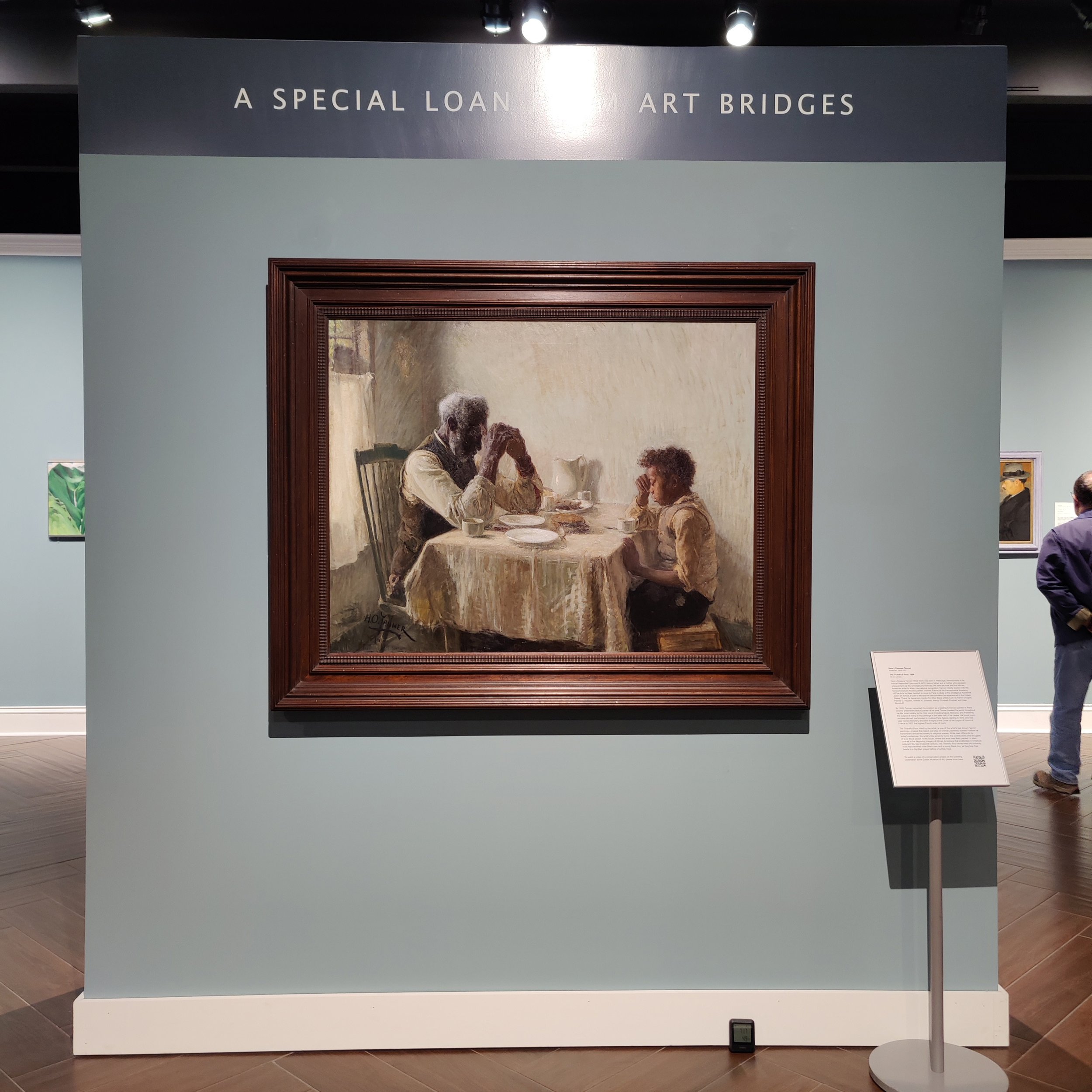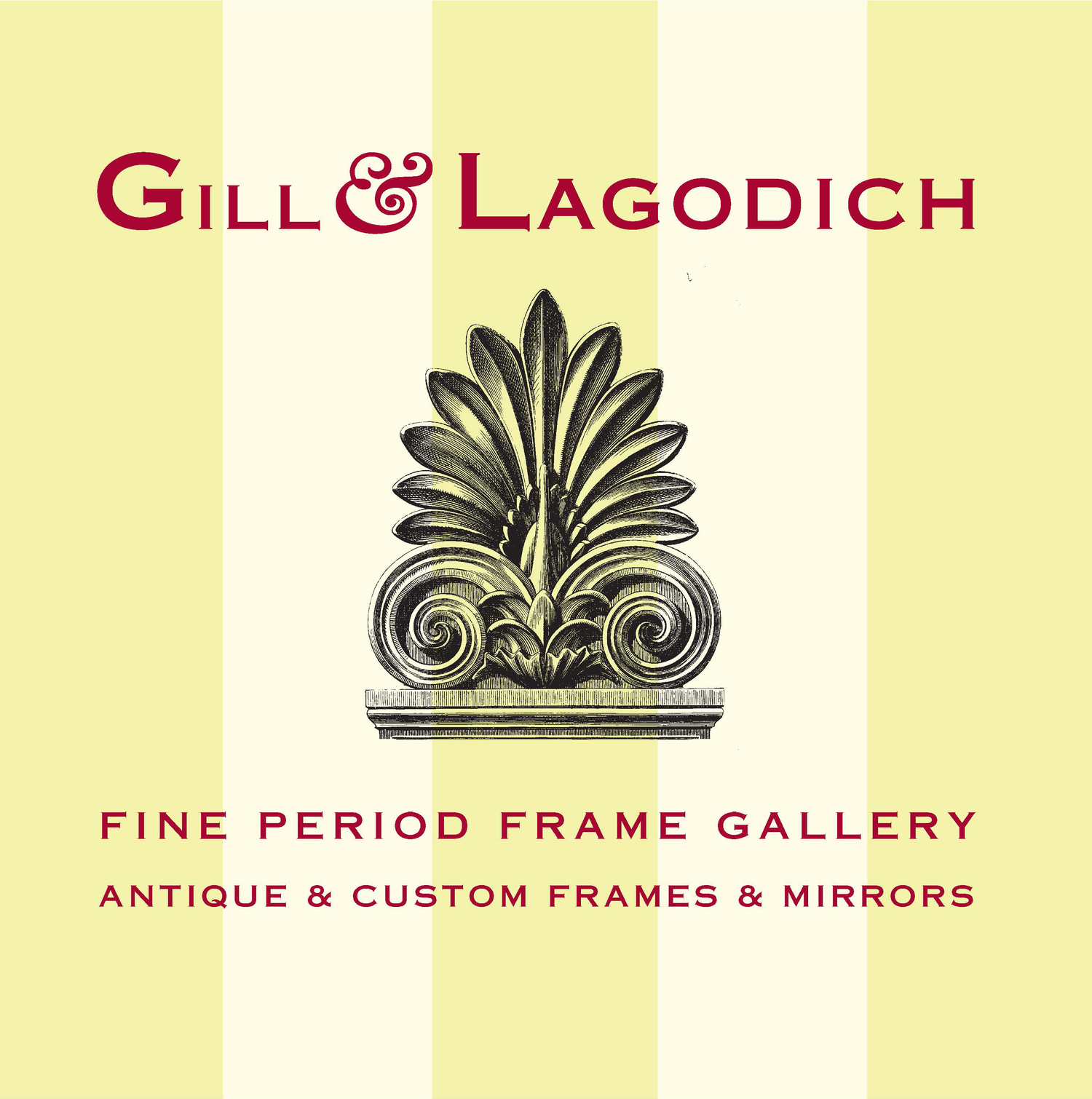ART BRIDGES FOUNDATION
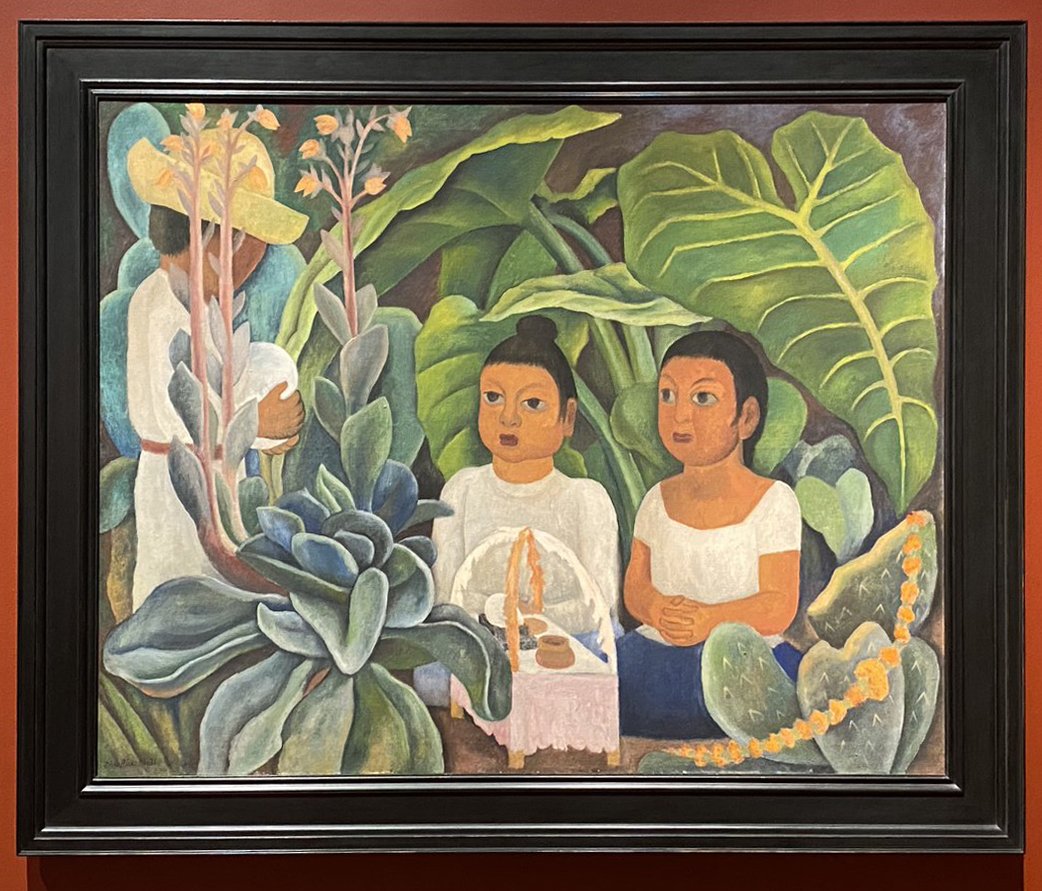
DIEGO RIVERA (1886–1957)
La Ofrenda (The Offering), 1931, oil on canvas, 48-3/4” x 60-1/2” Custom-made replica, c 1940s American frame, matte black painted finish on wood, molding width 5-3/8” “Amid a backdrop of verdant botanical life, three figures gather at an altar to honor the dead. Rivera’s scene depicts el Día de los Muertos (the Day of the Dead), a Mexican celebration in which the deceased are invited to commune with the living through an altar set with welcoming offerings. The composition of La ofrenda creates an implied ring that connects the figures to the altar, suggesting the circle of life that unites the living with the dead. After the Mexican Revolution (1910-1920), Rivera was invested in Mexico’s cultural revitalization. The artist’s passionate respect for the splendor and resilience of Indigenous Mexican culture is evident here. A garland of marigolds, omnipresent in Día de los Muertos celebrations, and symbolic of life’s exquisite fragility, is draped across a nopal cactus, which represents survival and appears on Mexico’s coat of arms. La ofrenda reflects the beauty and cultural endurance of post-revolution Mexico, demonstrating Rivera’s belief that “the artist is a direct product of life ... and a reflector of the aspirations, the desires, and the hopes of his age.”” —Art Bridges didactic label Credit line: Art Bridges AB.2017.19
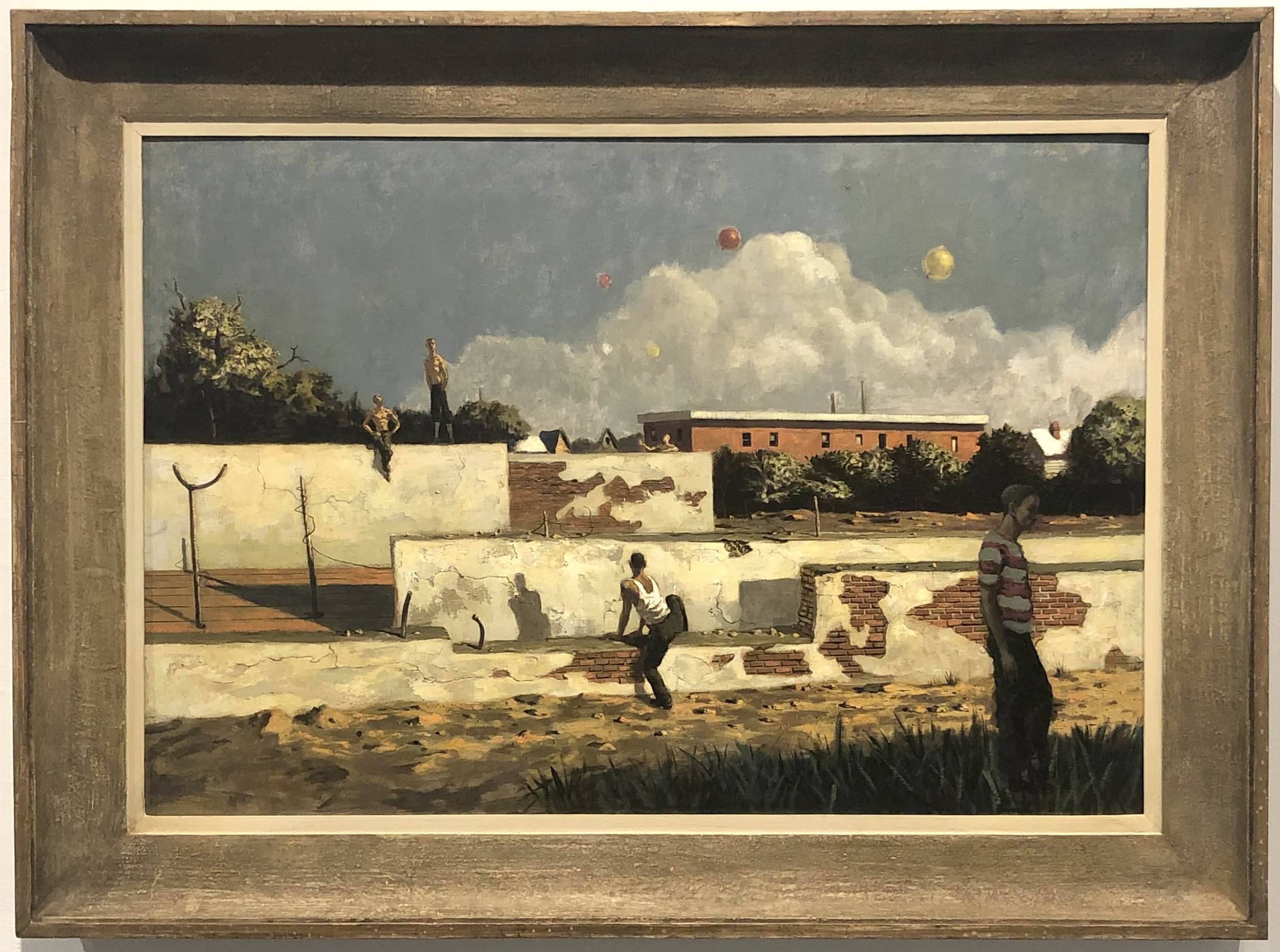
HUGHIE-LEE SMITH (1915–1999)
The Walls, 1954, oil on board, 24 x 36 in. Period c. 1930s-40s American Modernist frame, gilded and polychrome finish on wood, molding width: 4” “The iconography of Lee-Smith’s The Walls evokes the intense feelings of alienation and anxiety that oppressed Americans during the 1950s. The barren landscape, crumbling walls, and tangles of wire symbolize both the desolation of World War II and the threat of atomic destruction at the advent of the Cold War. These elements also represent the reality of decaying buildings in Detroit, where the artist lived. The distance and physical barriers that separate the figures are symbolic of social tensions. White male figures assume heroic poses atop the highest wall, signaling their dominance in a racially divided system. The central figure begins climbing walls that symbolize racism, while the isolation of the figure at far right reflects Lee-Smith’s own feelings of alienation as a Black man and as an artist. Colorful balloons drift skyward, revealing a sense of childlike innocence and symbolizing a vivid, albeit fragile, promise of hope.” —Art Bridges, didactic label. Credit line: Art Bridges AB.2017.18
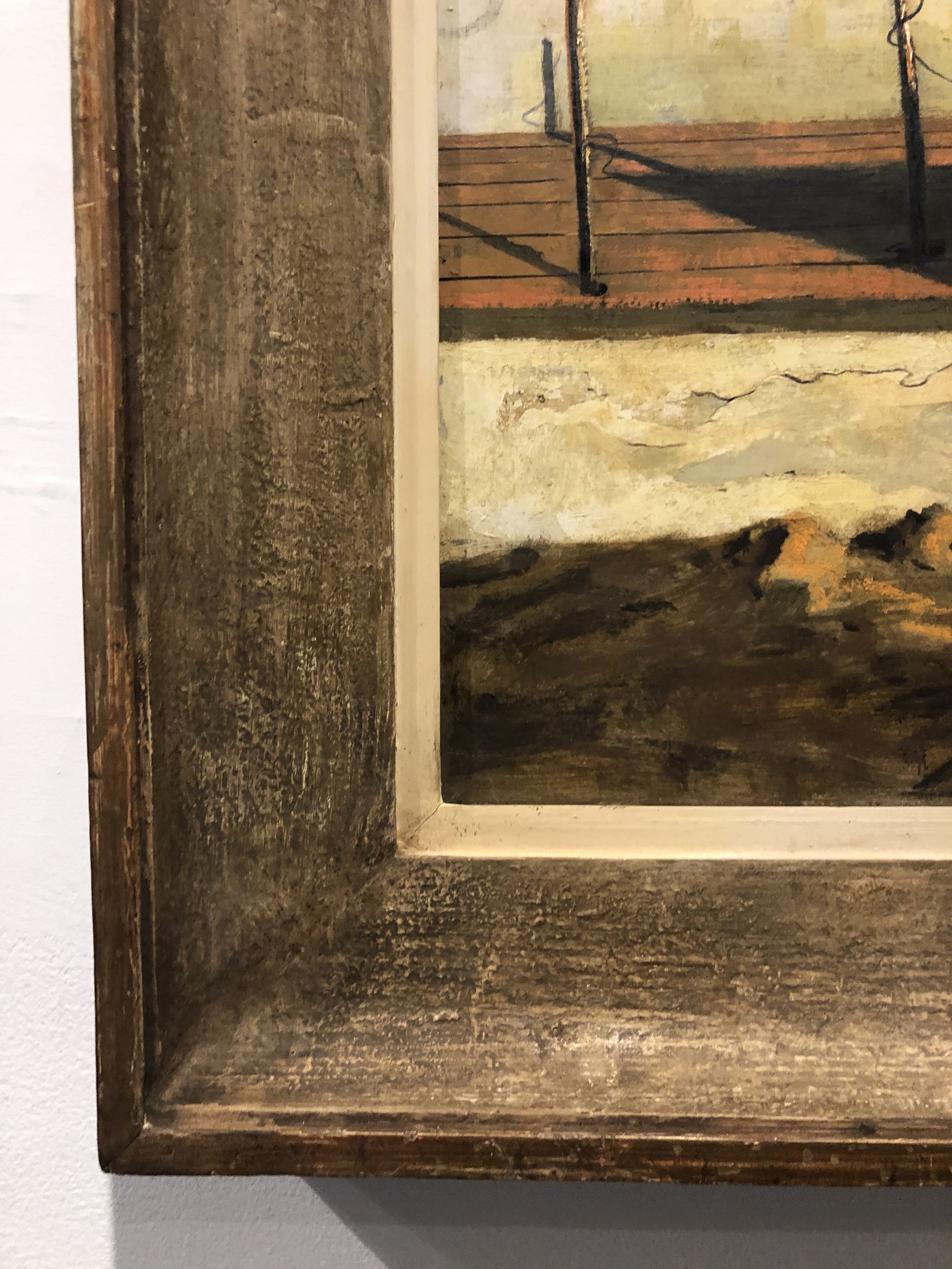
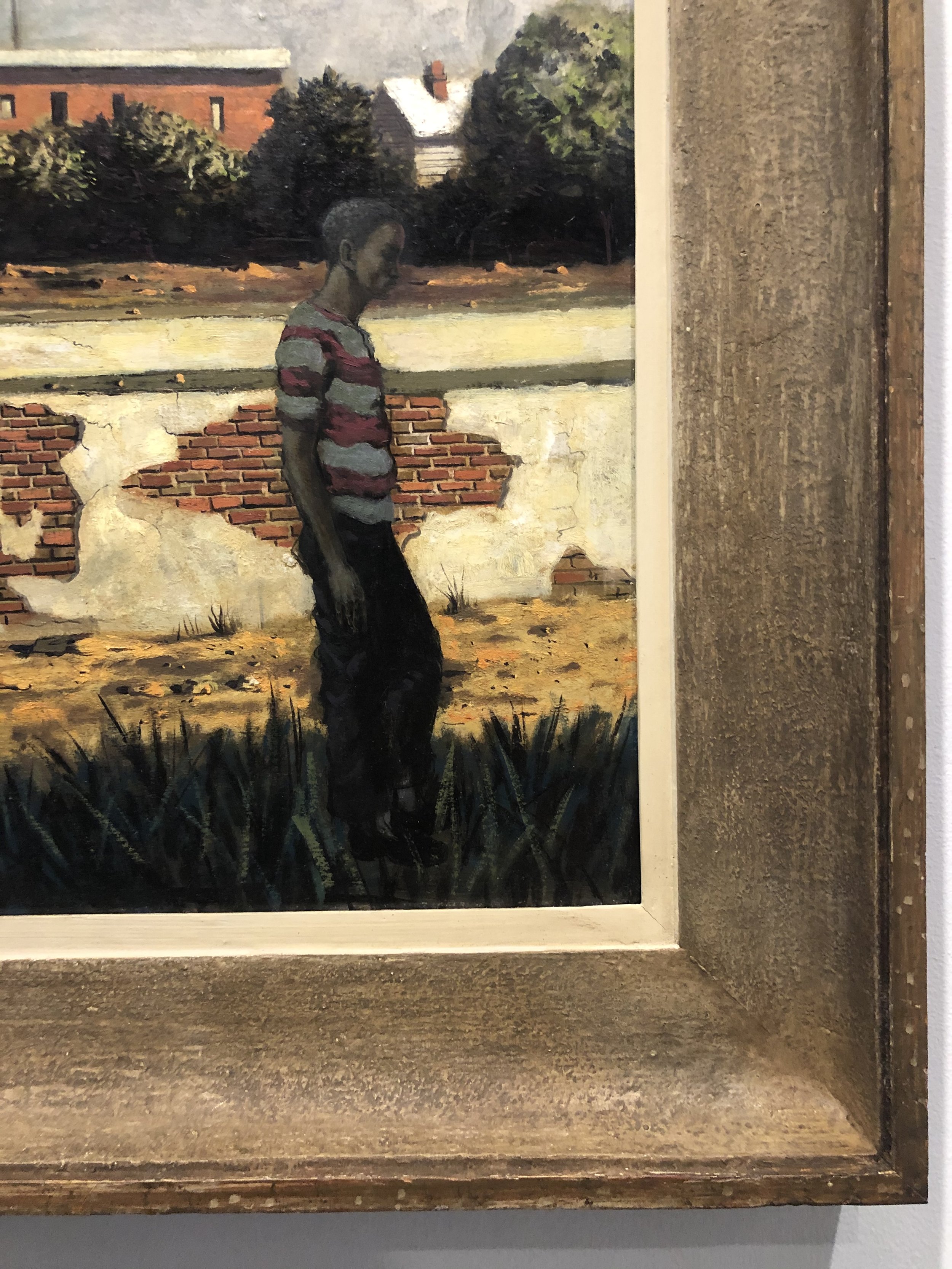
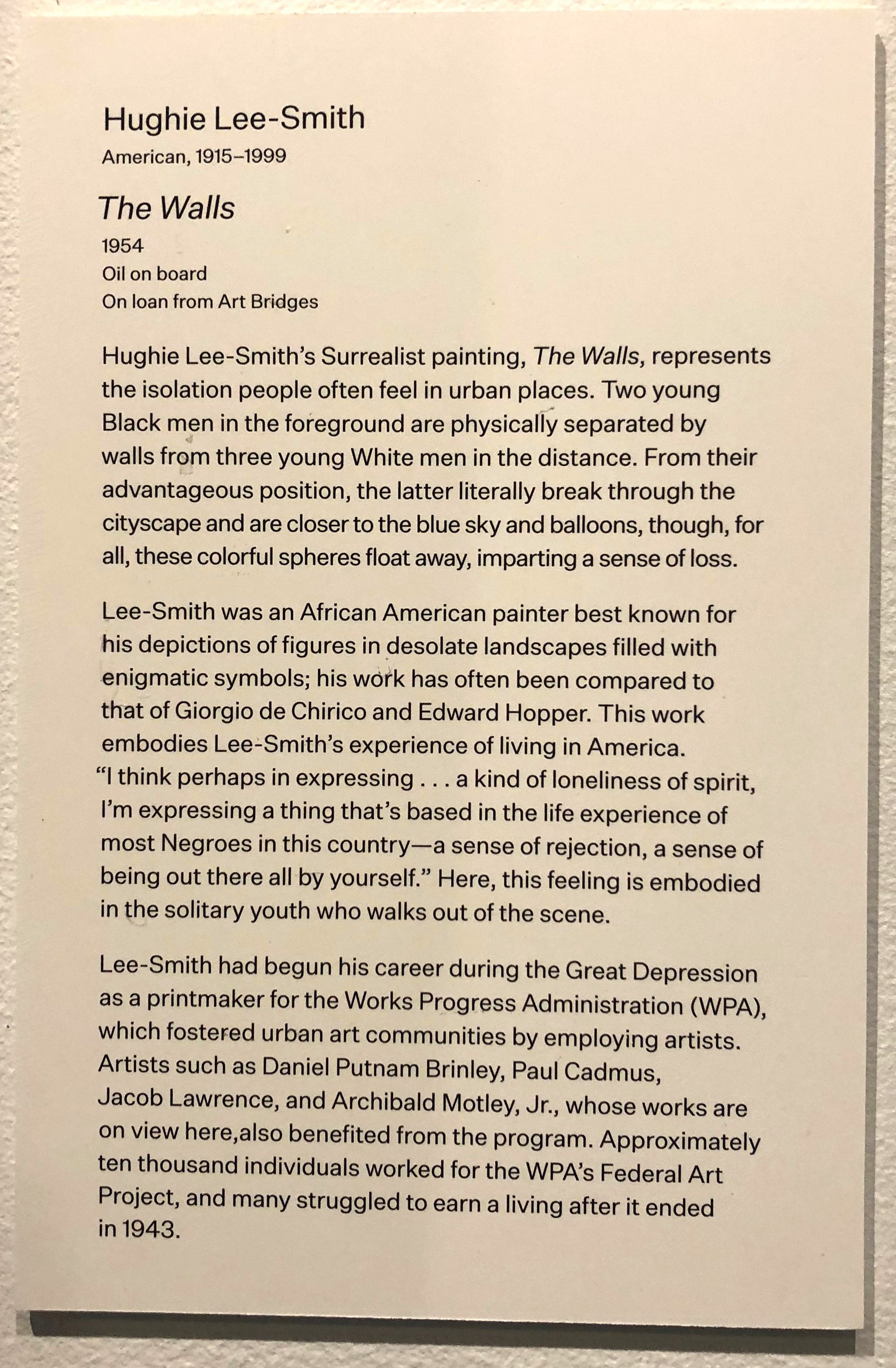

EDWARD JEAN STEICHEN (1879–1973)

In Exaltation of Flowers, 1910–1913, tempera and gold leaf on canvas, seven panels: two canvases: 120 × 100 in., five canvases: 120 × 55 in. Custom-made frames, adaptations of Joseph Urban-designed frame molding for Thomas Hart Benton, “America Today” murals, patinated burnished black Japan finish on wood, molding width 3-5/8 in. “American photographer Edward Steichen was also a painter of rare talent. From 1911 to 1914, he produced a mural for the Park Avenue townhouse of Eugene Meyer and his wife Agnes Ernest Meyer. Rendered in a cool tempera palette and dazzling gold leaf, the mural celebrates the couple and their circle of cultural sophisticates. The depicted figures include art patron Charles Lang Freer, the soprano Mercedes de Cordoba, the artists Katharine Rhoades and Marion Beckett, and the dancer Isadora Duncan. Steichen bred flowers in the garden of his French country house, and had a precise understanding of botanical forms. In Exaltation of Flowers was partially inspired by Maurice Maeterlinck’s 1907 book The Intelligence of Flowers, and each of Steichen’s subjects is paired with a flower thought to echo their character. The style of the mural is distinctive, exhibiting costumes and poses that mirror Steichen’s foundational fashion photography, while merging portraiture with aspects of Art Nouveau and Symbolist painting.” —Art Bridges didactic label. Credit Line: Art Bridges AB.2016.2
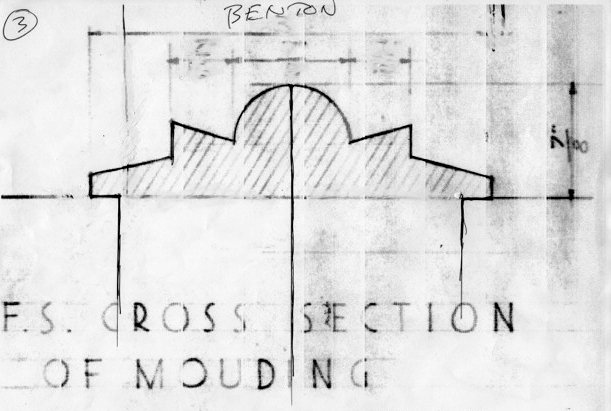
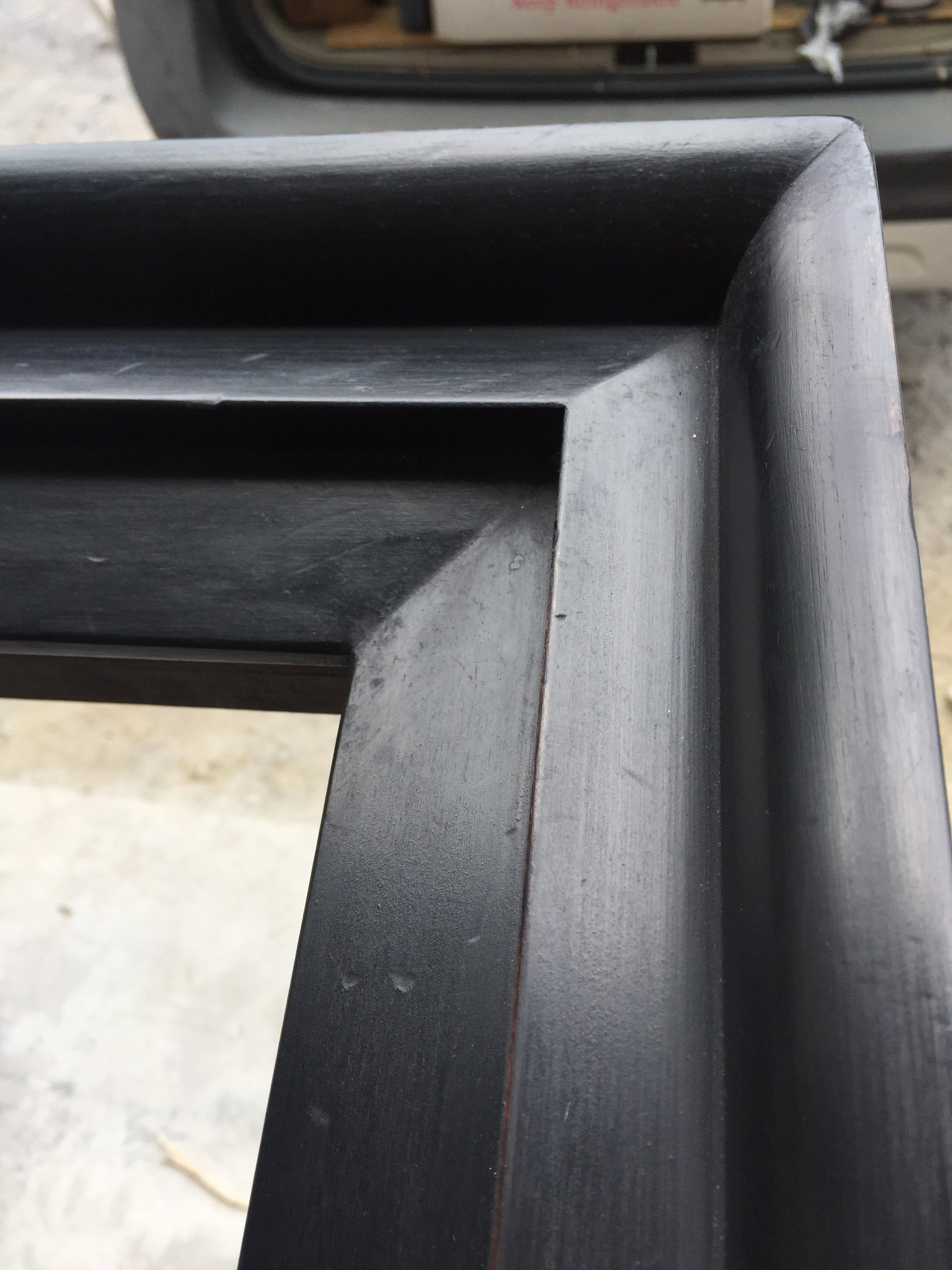

HENRY OSSAWA TANNER (1859–1937)
The Thankful Poor, 1894, oil on canvas, 35-1/2 x 44-1/4 in. Framed by Gill & Lagodich for the Art Bridges Foundation: custom-made replica c. 1890s American frame, original to Henry Ossawa Tanner, Nicodemus (at Pennsylvania Academy of Fine Arts), stained and oxidized mahogany wood, applied custom-wood ripple ornament, molding width 6 in. “Quiet and domestic, the scene depicted in The Thankful Poor suggests a spiritual moment between a young boy and an elderly man. Artist Henry Ossawa Tanner, born to a religious family, often channeled this sense of piety in his paintings over the span of his career. Later recognized for his biblical paintings, Tanner first produced genre scenes of Black American life near the turn of the 20th century. The Thankful Poor is the last known of these works. The decision to depict Black daily life became clear to the artist during his studies between Paris and Philadelphia, where he was academically trained. While Black subjects appeared in the works of white American artists, such as Winslow Homer and Thomas Eakins, Tanner distinctly prioritized the humanity of his figures. In The Thankful Poor, the artist accomplishes this by transforming a moment of prayer into a complex exchange of intergenerational kinship. Spiritual values are often tied to familial relations and this focus speaks to Tanner’s personal experiences within the African Methodist Episcopal Church, of which his father was a pastor.” —Art Bridges museum label
